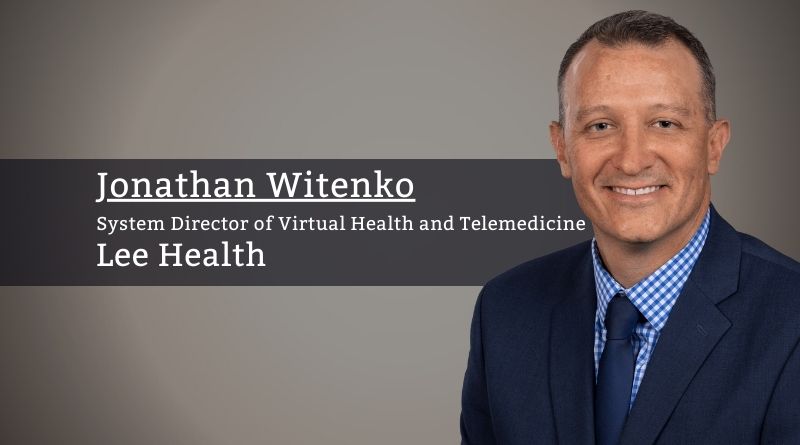The Need and Outcome of a Virtual Nursing Program
By Jonathan Witenko, System Director of Virtual Health and Telemedicine, Lee Health
Anne became a nurse even after promising to never follow in her mother’s footsteps. She treated each patient like they were her own son or daughter, easing their pain and discomfort and tending to their needs during their hospital stay. While Anne’s brain and heart were eager to continue, after 30 years and thousands of patients, her body wasn’t able to manage a 12-hour shift. She was on and off FMLA for her back pain and ultimately faced with the decision to retire from the only real career she ever knew. Anne was hired as a virtual nurse and found a new lease on her professional life.
The virtual nurse program is intentionally simple, by at the same token, dramatically ambitious…optimize nursing activities. COVID-19 brought about many changes to health systems, and the nurses’ occupation was probably single-handedly the most impacted. Burnout, rise in contract labor, shortages, and competing priorities have all placed strains on our caregivers. Virtual nursing attempts to reduce the burden of the bedside nurses, improve outcomes, and enhance patient experience, while tapping into the expertise of experienced nurses.
Lee Health recently launched a virtual nursing pilot program aimed at transitioning the non-tactile activities from the bedside to remote caregivers.
Lee Health recently launched a virtual nursing pilot program aimed at transitioning the non-tactile activities from the bedside to remote caregivers. Each patient bed became equipped with a telemedicine cart/wall unit and a space created for a team of nurses to remotely access. Once the bedside nurse completed their physical intake, they pressed the button and performed a warm handoff to their counterpart virtual nurse. Discharge is handed similarly. In addition, the virtual nurses are increasingly adding on activities to support the unit like chart checks, pain reassessment, documentation completion, education and intentional rounding.
One of the biggest questions we had as a system was whether to outsource or staff the program from within. We were worried nurses would jump into virtual and we’d lose our bedside nurses. The reality was, we were losing many already due to exhaustion. Additionally, we were able to tap into an entire workforce of nurses like Anne.
I had the opportunity to watch one of the virtual nurse’s chatting with one of their patients, Bob, during intentional rounding. The virtual nurse asked Bob how his dogs managed as there was an impressive thunderstorm the previous evening. Bob admitted that they likely kept his wife awake most of the evening and he was anxious to get back home. The virtual nurse then used the telemedicine cart to conference in Bob’s wife (and dogs) and video chat with them. Bob was so grateful for the opportunity as he admitted he was feeling a little homesick. He really appreciated that the nurse had not only remembered that he had pets, but that they were anxious during storms.
While it’s a little early in the program to see long-term ROI like burnout, satisfaction, outcomes, etc, it’s not too early to see the soft benefits to nurses and patients.



